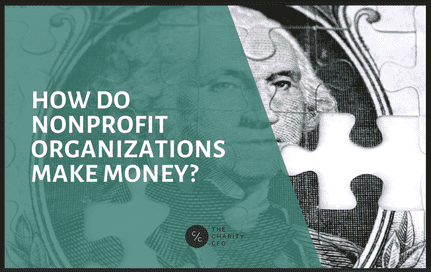How do nonprofit owners make money | How do nonprofits make money websiteearningchecker
Have you ever wondered how non-profit organizations actually MAKE money—let alone how the folks that own or founded them live off the profits? This is a topic that confuses many, and one I have been wondering about too. I mean, come on — nonprofits are not profit-driven; so seriously…where is the money? How the heck do the people who are running these orgs pay their bills?
But nonprofit organizations do get paid, and the people who drive these companies can earn their living. In this article, we will explore how nonprofits generate revenue and how their owners or employees can pay for their maintenance. Believe me, it is not that simple. There are ways for nonprofits to change the world, creatively doing good while being profitable.
What is a Nonprofit?
Before I even jump into the money, we should first learn what makes an NPO. In short, a nonprofit is a mission-driven organization that benefits the public. As a result, they do not pay out corporate wages or offer dividends to shareholders—instead, any money earned goes straight back toward achieving the organization’s purpose.
Many people tell me that there is no money in nonprofits. First things first: Let’s address this myth that nonprofits cannot earn money—they can, and they do. They just spend it with different priorities in mind than for-profit organizations.
How Do Nonprofits Make Money?
So, just where do NGOs really get their money? Nonprofits can create multiple revenue streams. Here’s a breakdown:
1. Donations
Many nonprofits need donations to operate. Maybe you have seen events from organizations that do fundraising of different kinds (email drives, gala events).
Individual donations—from one-time small gifts to major gifts from philanthropists—fuel much of the funding for nonprofit organizations.
Corporate Sponsorships often come about for visibility, tax deductions, or associating the business with a charity or corporate partner.
Nonprofits also rely on competitive grants from governments, private foundations, and corporate foundations. It truly is an art to craft a good grant proposal (and talk about stressful for me!).
2. Membership Fees
Some nonprofits have a paid membership program where individuals pay money to be part of the organization. This model is more familiar to nonprofit arts organizations, educational groups, or clubs where people derive specific value from shared exclusive resources, networking, and/or events.
3. Selling Goods or Services
Nonprofits can (and do) sell products or services. By running thrift stores or online shops, they can also have paid educational programs. A local animal shelter could sell merch, or a museum might charge for special exhibitions.
A great way for nonprofits to have a steady revenue stream while they help get the word out. I’ve seen nonprofits get crafty with this—selling a range of products from T-shirts to premium-level coffee, all centered around their mission.
4. Investments
This may come as a surprise for some of you, but the reality is that some successful (larger) nonprofits end up investing their money. They might have a portfolio of stocks, endowment funds, bonds, and so forth. The profits from these investments can then be used to cover the running costs of a nonprofit.
5. Fundraising Events
Whether it’s a charity run, an auction, or a gala, fundraising events are one of the biggest ways that nonprofits raise money. They get plenty of donations (and sponsorships) from these events, and they help educate the public about what they are trying to accomplish.
I remember going to a charity auction for an animal rescue one time, and they were selling all of these awesome items to people. A woman was like, “Yes, $1,000 for a luxury dog bed.” This really speaks to the heart of how people donate so heavily behind their causes.
How Do Nonprofit Owners Get Paid?
Now, how do the people who hold these places together eat from this dish? While nonprofit founders and owners are not taking those profits home, it doesn’t mean they are working for free, right?
1. Salaries
Nearly all nonprofits compensate their staff, including owners or founders! Salaries are usually lower than the private sector, though some jobs for skilled labor can earn a comparable wage. In most cases, the salaries are set by the nonprofit (adjusted for overall organizational health and industry standards), through their board of directors.
2. Consulting or Speaking Fees
A handful of nonprofit founders even pad their wallet with consulting gigs—sometimes in other nonprofits and sometimes in the same industry. They also receive invitations to paid speaking engagements or workshops where they are the expert in their field.
3. Book Income or Other Intellectual Property
By selling a copy of their book, a nonprofit founder can earn royalties. Similarly, organizations may offer licensing agreements if they develop a singular or unique education program or product.
4. Reimbursement for Expenses
Nonprofit owners are often on the road or working late hours, and many incur expenses on behalf of their nonprofit, such as travel, meals, or office supplies.
5. Bonuses and Incentives
A few dozen nonprofits provide some form of performance bonuses or other incentives for top leadership and key staff. This is especially true for enterprises with multiple financial structures.
Challenges and Misconceptions
Because let’s face it, running a nonprofit is NOT all sunshine and rainbows! Nonprofit owners are often either bringing home huge salaries or working for nothing, and while the truth is that it actually lies somewhere in between these extremes.
1. Funding Challenges
Funding is always a pressure for nonprofits. Nonprofits do not generate profit, and so they cannot reinvest for growth the way a for-profit business would. I have witnessed many groups come and go over the years, often closing doors when donations fall short or grants do not materialize as expected.
2. Misconceptions About Overhead
Many people think that nonprofits should use as little money as possible on “overhead,” such as staff salaries and administration. But guess what? Nonprofits have to pay people and operate properly in order to accomplish their mission! The challenge is to find a middle ground between reducing overhead expenses while allowing the organization enough operational ability to function.
Check it Out : How to make money fast in gta 5 online | How to make money on gta 5 story mode websiteearningchecker
How do nonprofit owners make money | How do nonprofits make money websiteearningchecker: FAQs
Q: Can a Nonprofit Owner Get Rich?
A: Typically, no. Some nonprofit founders can make nice salaries, but really the aim has to be about the mission, not making a ton of money. People in charge of nonprofits can’t bring profits home like business owners can.How do nonprofits make money websiteearningchecker
Q: Can nonprofits invest in stocks?
A: It is often the case with larger nonprofits, which may operate an endowment fund or have contingency reserves that they invest into financial markets to generate additional revenue.How do nonprofits make money websiteearningchecker
Q: Do employees of nonprofits get paid?
A: Yes, nonprofit employees (including executive directors and founders) are paid. However, pay levels can range dramatically from one type of nonprofit to another and from one size of organization to another.How do nonprofits make money websiteearningchecker
Q: Do nonprofits pay taxes?
A: Many nonprofits don’t pay taxes, but individual cases may vary.How do nonprofits make money websiteearningchecker
Check it Out : How to Make Money as a Remote Online Notary| How to Make Money as a websiteearningchecker
Conclusion
So how do you profit as a nonprofit owner? From salaries, consulting fees, and even royalties at times, all anchored in the mission work of a nonprofit. Nonprofits make money from donations, grants, the sale of goods and services, etc.
This space is complex yet inherently intriguing to financial geeks with a heart and pockets full of empathy. Whether you’re considering starting a nonprofit or are just curious about how they work, understanding the financial side makes them all the more impressive.




